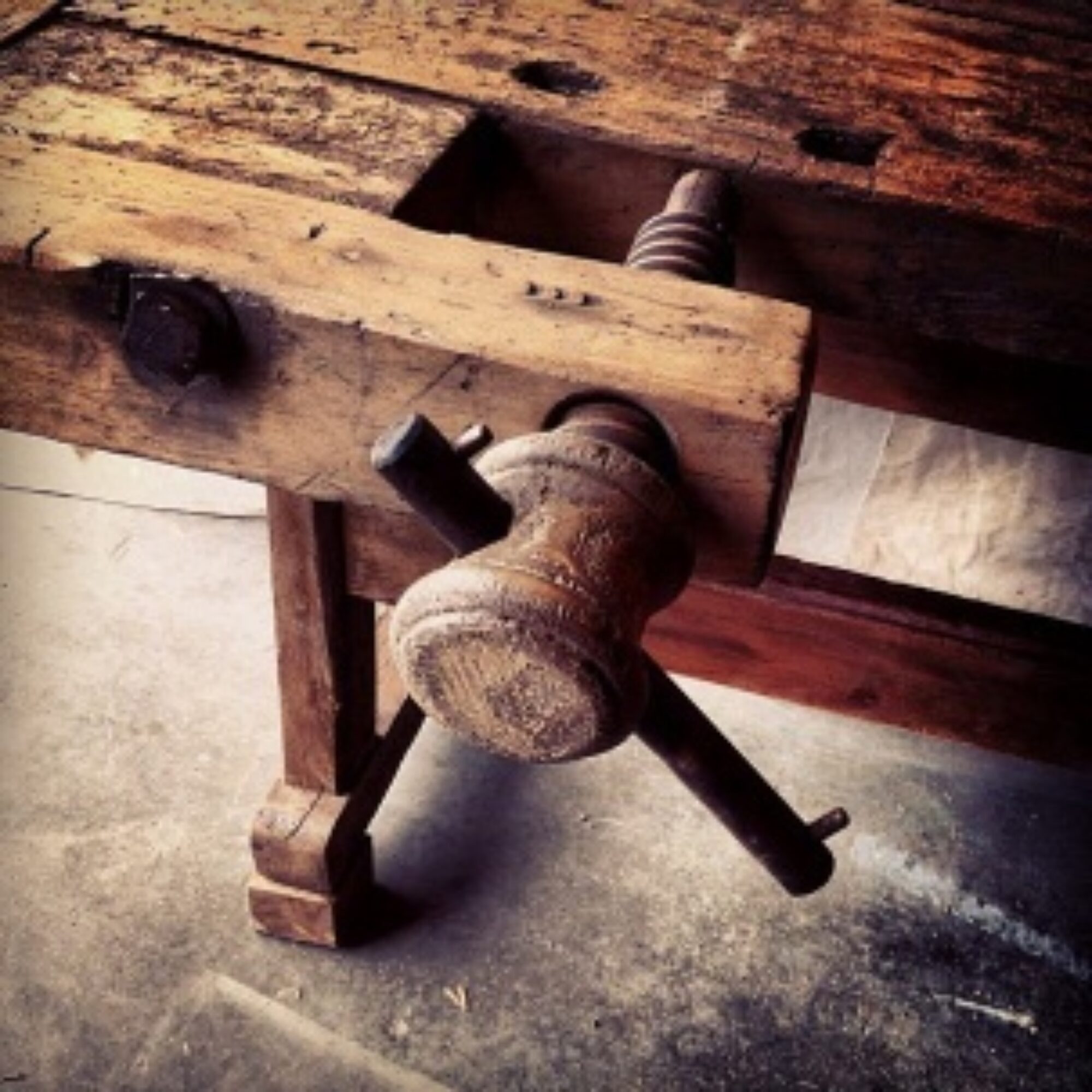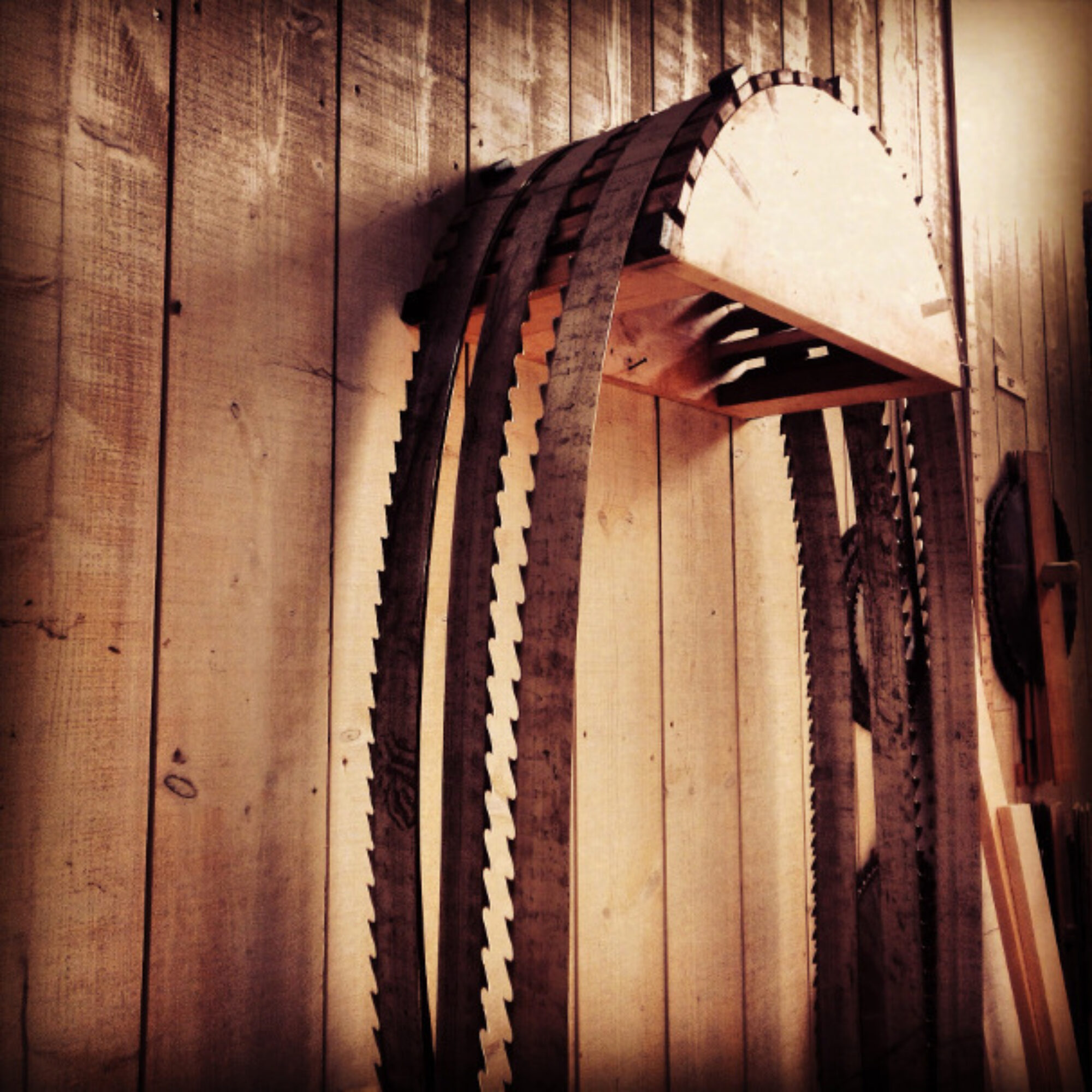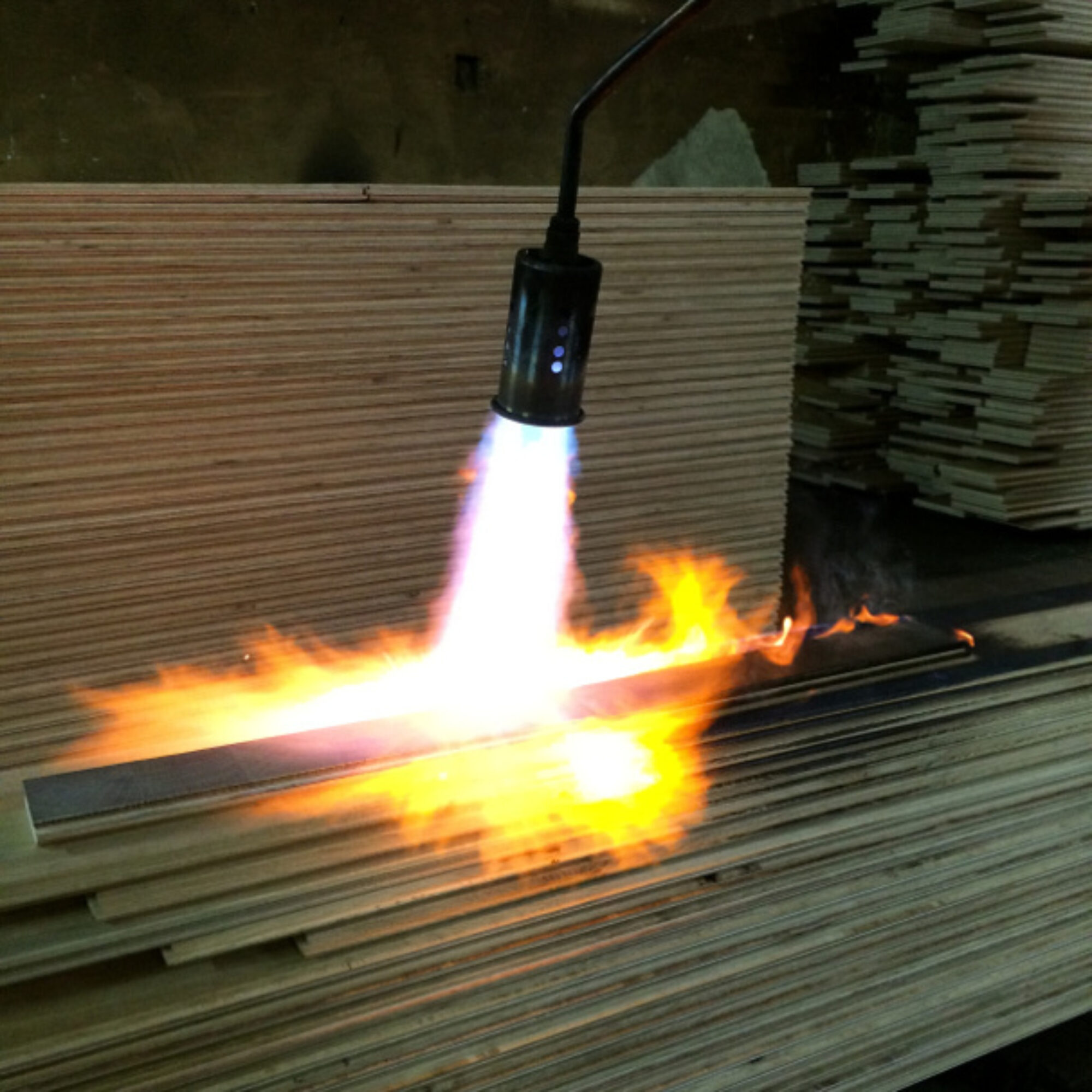FAQ
As we sell both solid and engineered floors, we feel we can be impartial about this question. The last twenty-five years have seen the timber flooring market move almost entirely from solid to engineered planks. This is not down to fashion but because engineered flooring is such a versatile product. As it is much more dimensionally stable than a solid timber floor, it can be used in conjunction with underfloor heating, floated on top of acoustic underlays, and installed in more challenging environments (such as humid basements) - all in widths you could only dream of in a solid.
In short, no. Once installed, our well-made engineered floors are indistinguishable from a solid timber equivalent, both visually and audibly (what it looks like and what it sounds like when walked upon). A visit to either of our showrooms will prove it to you.
Yes they are, unless a room is subject to extremes of heat,cold, and most crucially, moisture. Our floors sit comfortably in living rooms, bedrooms, hallways, kitchens, basements, lofts, etc. While kitchens are the most challenging rooms, today's advanced wood finishes mean that timber is now a viable choice for them.
Samples are available to order online. Due to the cost of postage, the number of hand samples we can post for any one request is limited to two. We also lend our large sample panels from the showrooms. This is the best way to appreciate the beauty of our timber floors. Hand samples, by virtue of their small size can only give a hint of the colour and grain of a floor.
As part of the process for generating a quote, we offer a free site survey. We do this not simply to give you a confirmed price to supply and install your new timber floor, but also to inspect site conditions and spot any potential details that would involve the flooring. Generally, the survey is carried out after your showroom visit and any initial estimate we work out, based on your flooring choice and plans or drawings you have sent us. We do not need to survey your property if you are only buying the materials from us. In that case, we would advise you to have your installer confirm the quantities of materials required.
We have two showrooms, one in West and one East London. Our West Showroom in Marylebone is open Monday - Friday 10.30am-6pm and Saturdays between 10.30am -5pm. Our East Showroom, just off Columbia Road, is open Monday - Friday 10.30am - 6pm and 10am - 2pm on Sundays. We can be open in the early evenings too by appointment.
Our timber floors, properly looked after, will last a lifetime or longer. We offer a 25 year guarantee when we carry out the installation. Modern, advanced finishes ensure that the floor surface can be renewed as necessary. Therefore, unlike in the past, the eventual sanding the floor is not an inevitability (although is still always an option). You can see why we are confident of the longevity of our floors.
Yes, most of our engineered timber floors are suitable for installation in conjunction with underfloor heating. We are always happy to advise you on the use of our floors with your chosen underfloor heating solution.
Simply put, grading in timber is a system of classifying the wood according to its visual characteristics. Typical characteristics are knots (size and frequency), fissures, colour and grain variation, and presence of sapwood. Very few of these will be found in a prime or select grade of timber, while the most will be found in a rustic grade.
For a full explanation and illustrations, see our Journal: What is grading in timber flooring?
Pre-finished floors tend to come with a bevelled edge along their long sides. What this means is that the sharp edge of the plank is slightly flattened. When two boards are fitted together, the two adjacent bevels create a visable 'V' groove along the join. The standard option is micro-bevelled which equates to 0.5mm-1mm rounded off each long plank edge. A more defined larger bevel is an option for some of our ranges.
Most of our floors can be ordered with a 'distressed and aged' look. This means the timber is new rather than genuinely reclaimed from an existing property however, using hand finishing techniques we can scrape the edges of the planks, distress the surface and create an aged-looking patina which combines to create an authentic, aged floor. We have installed distressed & aged floors in Georgian townhouses, listed period properties and stately homes as well as modernist apartments and glass box extensions.
Read more in our Journal: Distressed & aged floors - what are they?
The majority of our floors are finished in some sort of oil. This could be hardwax oil, UV oil, or similar. If you want a timber surface that is easy to maintain, has a natural look with a deep lustre and avoids the nasty, plastic look and feel of a cheap wooden floor, then we would recommend one of our oiled finishes.
At Solid Floor we prefer low maintenance, hard wax oiled finishes which are easy to keep clean. We recommend that you follow our 'Care and Maintenance' instructions which we supply with every floor we sell. Timber floors should be vacuumed or swept to remove the daily dirt and grit. We also suggested you use barrier matting at the front door. Coir mats look great alongside a timber floor. When washing a timber floor you should avoid sloshing too much water on the surface. Best to use a damp mop, tightly wrung out, in conjunction with the recommended cleaning products. Our after-sales care is top notch. We are always happy to help with any questions you may have.
If your existing timber floor is looking tired and worn, or you would like to change its look, we can quote to sand and refinish it. Our team has years of experience along with modern equipment, complete with dust extractors that keep the dust to a minimum.
We install all of the floors we sell. We recommend you use us for installation, as we understand the product better than anyone else. While general contractors will often install floors, they are, strictly speaking, not specialists. Our installers are. Solid Floor can manage this entire process for you; our experienced eye and commitment to quality craftsmanship will ensure an excellent job. When we quote for the fitting, we can give you an estimate of how long a job will take. Installing a timber floor in a typical 30-40m² living, dining, or kitchen would take around 3-5 days.
All timber floors are moisture and humidity sensitive. Thus it is important that the moisture content of the timber planks is in equilibrium with their installed environment. If they are not, there is a risk that the new floor will shrink or expand beyond the norm. To help protect against this most solid timber planks should be acclimatised at least seven days ahead of installation. Most engineered planks need less time. There is little point in acclimatising the timber, however, if conditions in the site are extreme, for instance if the heating in the house is not operating or the rooms are being plastered. To avoid costly mistakes its best to consult a professional about how to deal with site conditions and acclimatisation of timber. If Solid Floor installs the floor for you we will check all of these details.
All materials exposed to UV light will change colour over time. This natural process happens not only to your timber floor but also to painted surfaces and fabrics. The timber surface will also gradually change as it wears and acquires a patina from use and cleaning. As we have been selling timber floors for over twenty-five years, we can give you seasoned advice about the impact of time on your treasured investment.
If you live in a flat or an apartment, most likely you will. Most people living in blocks or houses converted into flats will require some form of acoustic insulation. Please check your lease or discuss this with the managing agents to determine what your requirements are. We can help guide you through the maze of complex acoustic products and noise reduction regulations. If we install your timber floor we can also install the acoustic products you need to satisfy the authorities.
All timber products are moisture and heat sensitive. We recommend that everyone with a timber floor should measure humidity within the home using a hygrometer. This is a discrete, digital device that gives readings of relative air humidity (RAH). Maintaining a RAH of 50-65% will minimise the shrinkage and expansion of your timber floor. It will also protect any other wooden furniture, antiques, paintings and keep you feeling healthy too! Low humidity affects timber and also causes human skin to dry, flake and crack. If measured it can be avoided!
Our oak is European and the floors are manufactured and finished in Europe too. We source other timber species from across the globe but all from reputable and well managed sources. Where possible we use timbers certificated by the FSC and PEFC competency schemes. If you have any particular questions about our timber sourcing, please get in touch.
FSC (Forest Stewardship Council)® and PEFC (Programme for the Endorsement of Forest Certification) are international organisations promoting responsible forest management. To carry the FSC and PEFC labels, timber and wood fibre products have to be recognisable as coming from a certified source at all points in the supply chain from raw material to the consumer. Chain of Custody (CoC) certification connects responsible forest management practices with consumers. It provides a consistent, international basis for claims about the sourcing of wood and wood fibre products. Solid Floor's FSC CoC certification code is: CU-COC-828136 Solid Floor's PEFC CoC certification code is: CU-PEFC-828136. By selecting timber from responsibly managed forests we are using natural resources without destroying the ecological balance.
We do not, as a rule, keep stock. Most of our timber floors are made to order to give you the freedom to choose the plank size, timber colour, grade, and finish that best suits your project. Occasionally we do run a special promotion offering a limited, stocked item, so do check our Special Offers page on the website.
If a floor is being made to order our lead time is usually around 8 weeks from the payment of the deposit to our being on site to install. If you need a floor more quickly, then please contact us by phone or email, with your requirements and we will see what we can do.


